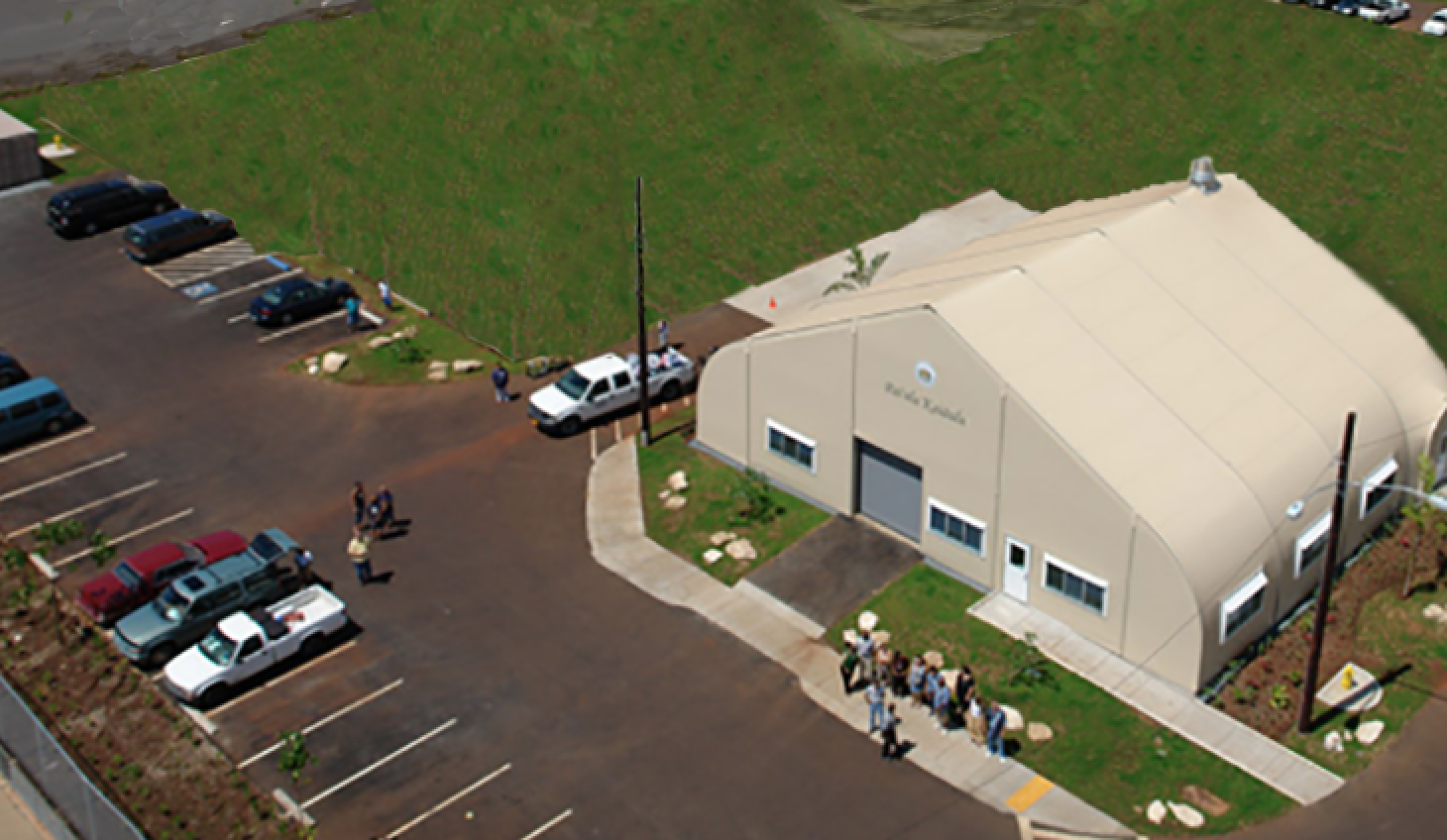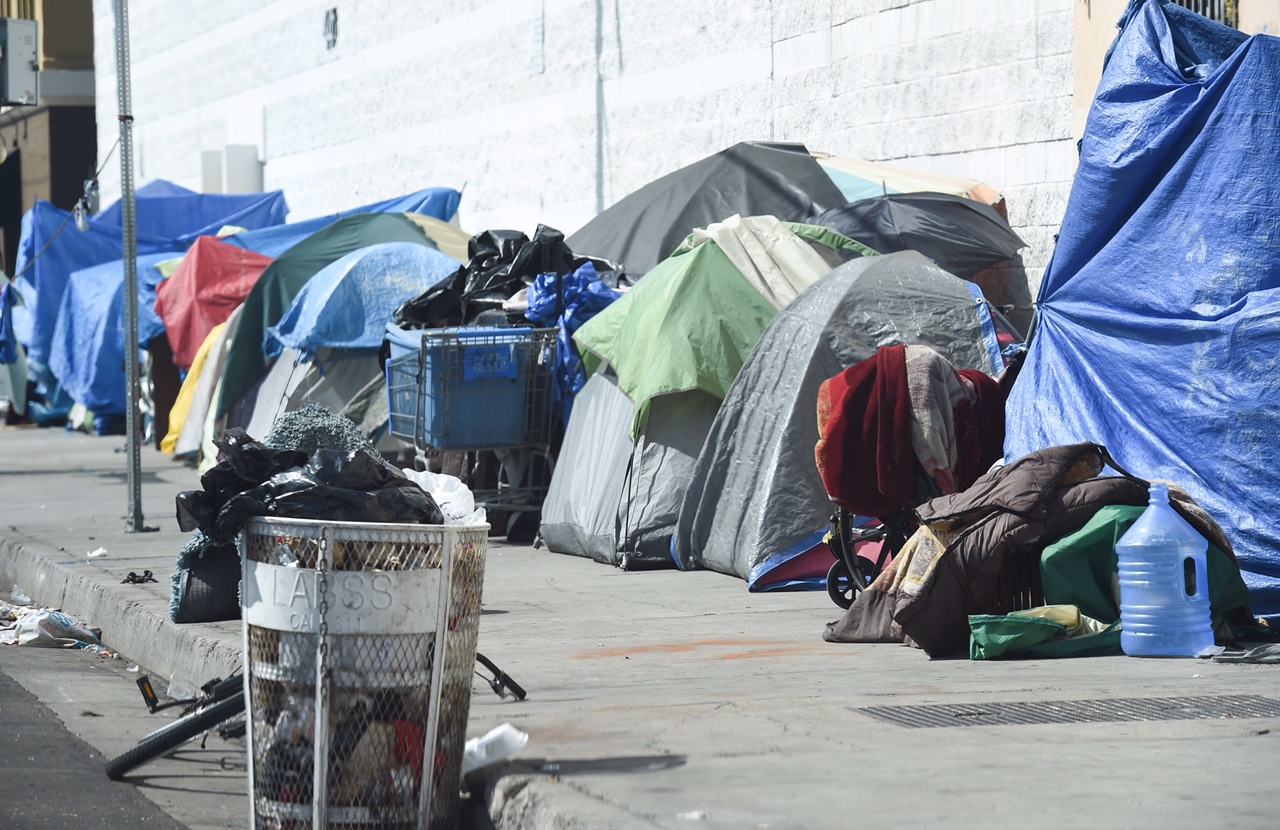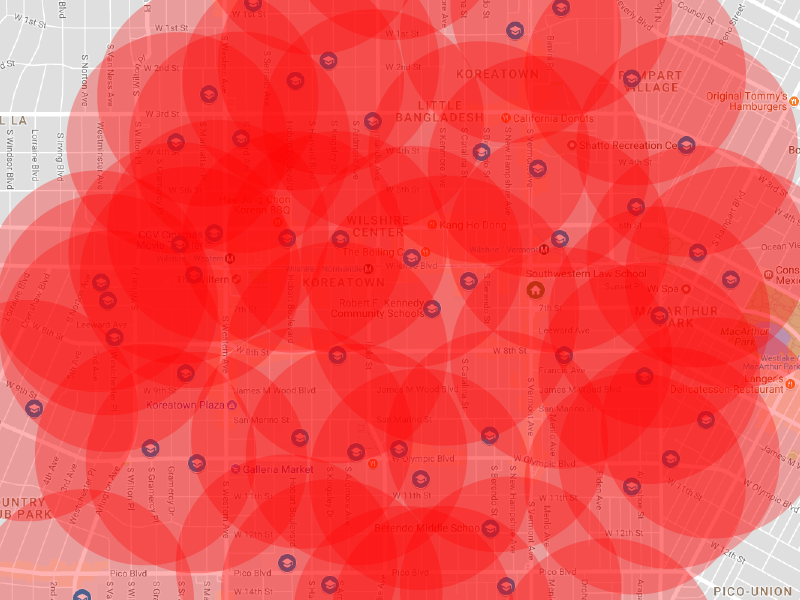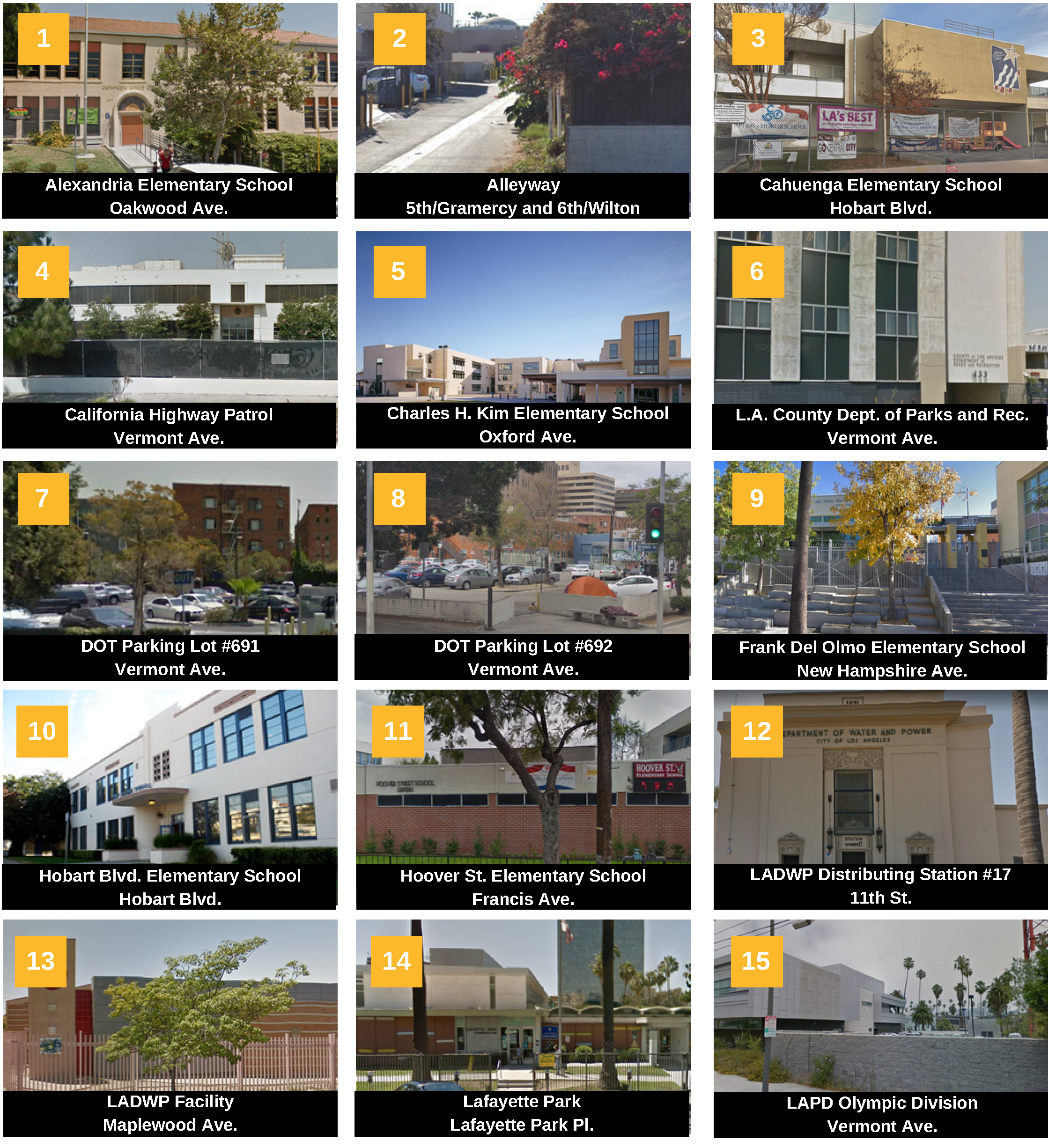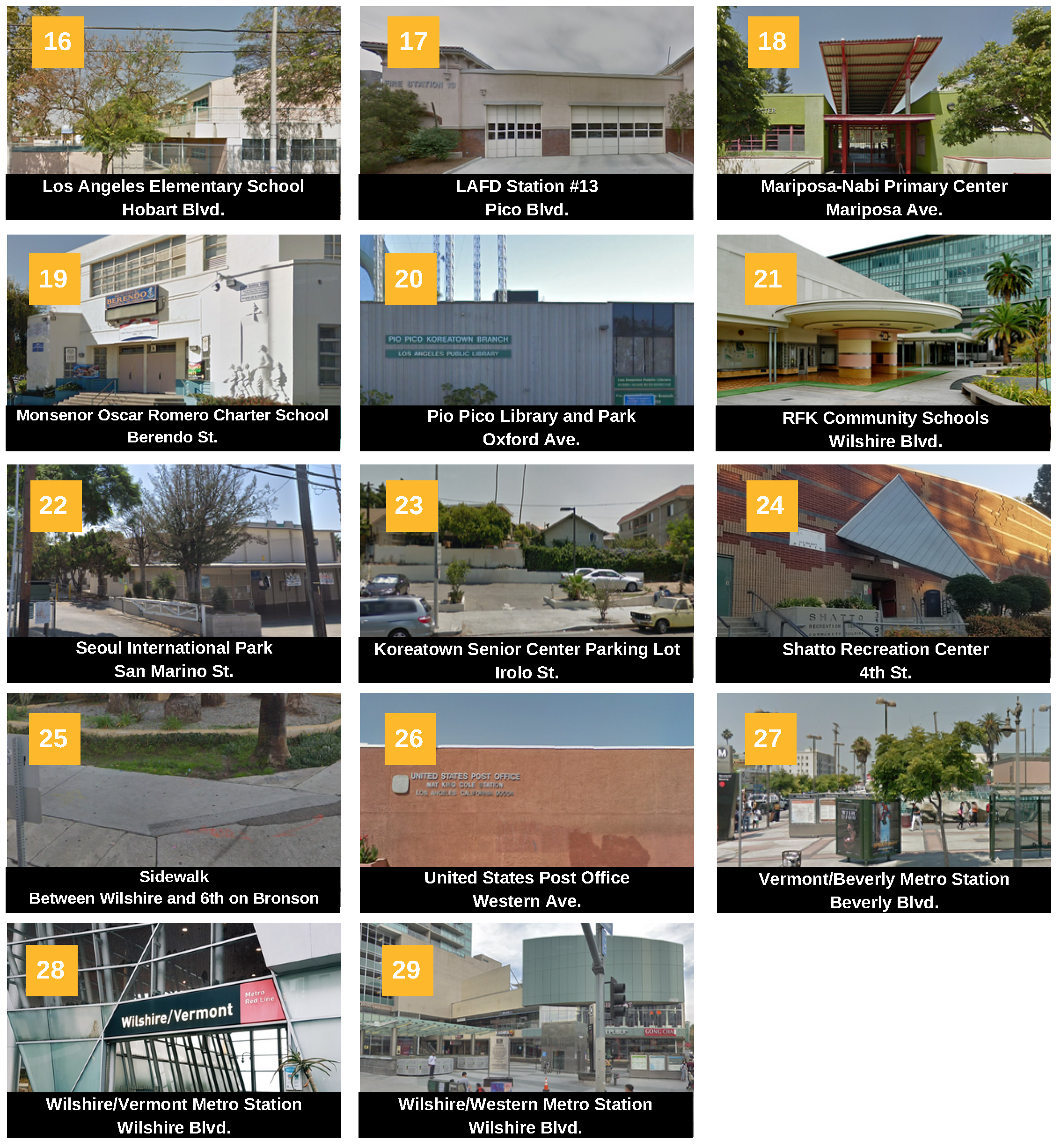The proposed emergency temporary homeless housing site is located in the heart of Koreatown near Wilshire and Vermont, at 682 S Vermont Avenue. It consists of 24,600 sq ft. of land currently used as public parking, and will include a building where homeless people can sleep at night, shower, use the bathroom, and store their belongings. This housing facility is the first of 15 sites that the City of Los Angeles is building as an emergency response to homelessness. The site is expected to open in 2019 after construction, and will be re-evaluated after operating for 3 years.
This page has been greatly improved and expanded with the help of community residents who spent many nights researching, rewording, and summarizing facts and providing proper context to the debate. Thank you!
Build it in K-town - it's good for the community
Currently there is a lack of support facilities for homeless people in K-town. Increasing rent is pushing more and more people to the streets. Regardless of whether or not you recognize homeless people as members of the community, this is a pragmatic approach: sheltering the homeless is a clean and safe short term solution for both the homeless and the rest of the neighborhood.
K-town businesses have asked the city for a solution to homelessness for years, citing difficulties that homeless people allegedly create for their businesses. Through our vote, we finally have secured the resources for a well funded program to tend to the urgent needs in the community. To now refuse the solution presented, is akin to a patient who admits he is sick, pays a doctor, then refuses a vaccine for fear of the needle. Refusing to implement the policies most Angelenos see as being needed for the solution is reversing the dedicated decades of labor of many community leaders, religious leaders, activists, business owners, and citizens who wish to improve and bring actual change in their local neighborhood.
Despite being a net benefit for the community, there has been an unending list of confusion, concerns, and accusations against the facility, perpetuated by the Korean media. Here we provide information countering the claims.
Regarding the question “Why Koreatown”? “Why Wilshire-Vermont”?
Koreatown has one of the largest homeless populations in District 10, and we need an immediate solution. This solution would address Koreatown’s local growing population.
Beyond that, there are various reasons why the location works. First, the location on Wilshire-Vermont is easily accessible - both the Red/Purple lines and various bus lines meet at Wilshire-Vermont. Second, it’s in the heart of a large cluster of nonprofits, religious centers, and government assistance buildings that can provide supportive services. Third, the Wilshire-Vermont Metro Station area has the 4th highest density of jobs in the entire Metro system (out of 96 Metro Rail and BRT stations). Fourth, Koreatown is one of the most radically diverse and inclusive neighborhoods in the country.
Regarding claims that "this is a tent town"
Some people incite fear by equating this Project to the "tent town" in Skid Row. The proposed temporary shelter will have Los Angeles Homeless Service Authority and Los Angeles Police Department presence at all times. Council member Wesson also seeks the community’s input on elements of its operation. (You should reach out to your councilmember with ideas and suggestions!)
Skid Row is not a homeless housing facility with these features. The formation of Skid Row is the result of decades of ineffective and inefficient policies, the concentration of social services in around 4 square mile area in hopes of keeping the Los Angeles’ homeless population in one place ("out of sight, out mind"), corruption and waste of funds assigned. Its creation could've been easily prevented but the lack of good leadership and initiative stopped this. The continuation of Skid Row is because of the rejection of the Skid Row Neighborhood Council, selling of city land that could be used to build affordable and transitional housing been sold to the highest bidder, refusal in building shelters for each local community, and fear mongering.
Below, to the left, is a visual of the proposed facility in K-town. To the right is a photo of skid row. One is a building - the other is simply a place where homeless people who couldn't find a place to stay ended up getting together. These two are very different things.
Regarding claims that "a homeless facility will bring more homeless people"
Accusations that the shelter will attract long lines and larger encampments is mere speculation at this point.
There will be at least 15 homeless shelters city-wide. They will largely operate at the same time, to ensure that the homeless have access to a nearby shelter no matter where they are. This will reduce the chance that an unsustainably large number of homeless people gather at one particular site. Outreach work should be done in order to bring the homeless to the nearest facility and to create meaningful bonds that promote healing, transition and reintegration. The creation of jobs that would be needed to help the homeless population (mental health professionals, addiction specialists,etc.) should be encouraged.
To the extent that the proposed shelter attracts more homeless people into Koreatown, the shelter also aims to provide at least 65 units that take its occupants off the streets. As for “government hand-outs” or sensationalized fear of soup lines, the shelter may include supportive and self-sufficiency development services, but with a goal of providing the homeless a chance to get back on their feet. A few of their purposes is to regain the amazing human potential lost to homelessness, and reintegrate people so they can become successful, contributing members of society. Council member Wesson’s office seeks community input on how we are going to do this at the proposed shelter.
Outside of that, there are no concrete facts to support this concern.
Regarding the claim that one large, centralized location is better
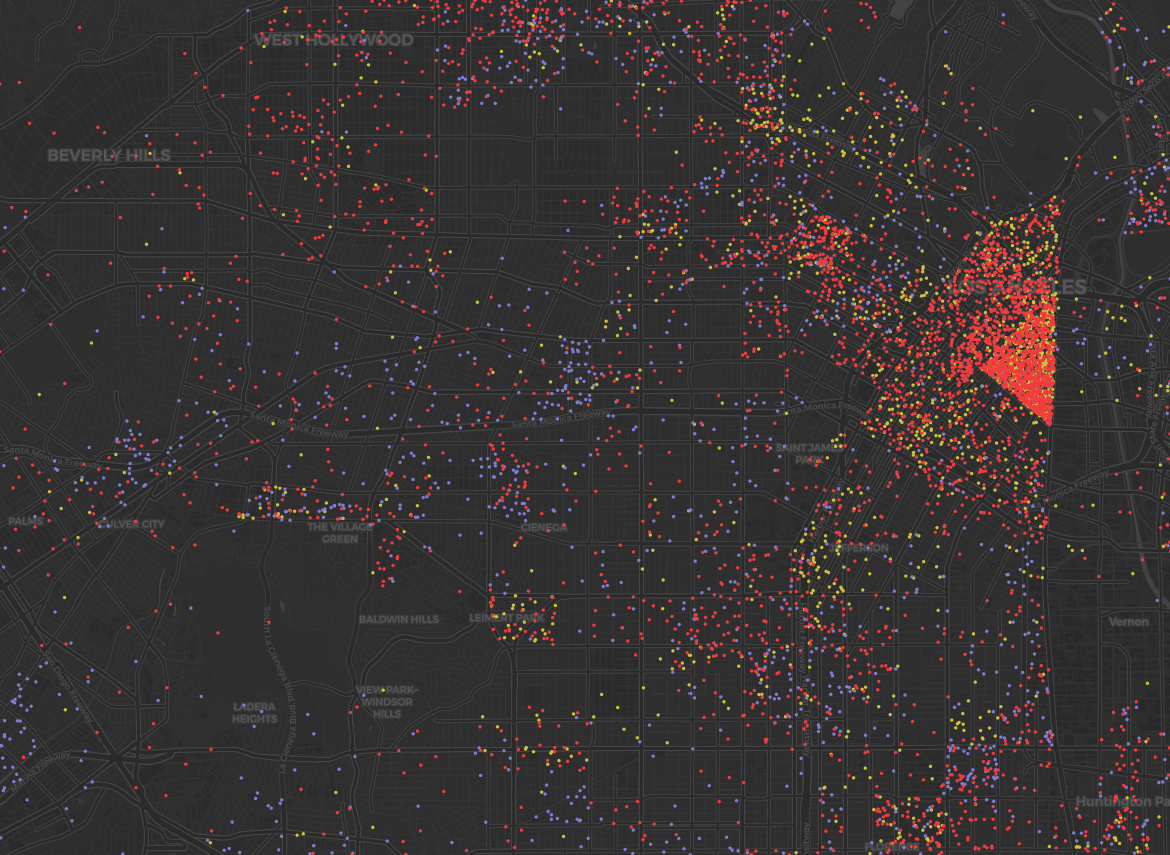 The City provided funding for at least 15 temporary shelters because homelessness is spread throughout, including in Koreatown. Forcing the homeless to move to far-away shelters or one centralized location cuts access to the emergency services and networks they already rely on- it will only make matters worse.
The City provided funding for at least 15 temporary shelters because homelessness is spread throughout, including in Koreatown. Forcing the homeless to move to far-away shelters or one centralized location cuts access to the emergency services and networks they already rely on- it will only make matters worse.
One centralized location would also place too much of a burden on that one neighborhood: the City decided that each if the 15 districts will contribute. Suggestions that the shelter be placed elsewhere ignore the key fact that shelters will be build throughout the City. This is a shared responsibility, and Koreatown needs to do its part.
The centralization of services and of a location could create similar issues that brought the formation of Skid Row - it would bring people from different parts of the city to receive help because there is none nearby where they mostly frequent; a concentrated, in many cases easily exploitable population, could make it harder to intervene and provide support with cleanliness, drug abuse, conflict mediation, internal hierarchies, and mental health.
Regarding Due Process and Dissatisfaction with Procedure
The State of California recently passed a law addressing the shelter crisis. The State Legislature was concerned that existing regulations and procedures would make it too difficult and time-consuming to even approve and build emergency shelters. So it created an expedited process. It is through this law that the City can quickly place the proposed shelter and bypass burdensome and lengthy procedures to immediately address the existing lack of shelters in the face of rising numbers of homeless people. The alternative is a process that is far too slow to appropriately address the problem that is at our doorstep. The current bureaucracy’s political red tape hinders meaningful conversation and implementation of policies that actually attempt to combat this issue.
Lives are at stake, so the State chose to allow cities such as Los Angeles to hurry. Addressed specifically for this crisis, the state law will automatically terminate in 2021.
With this in mind, the City quickly decided that each District will chip in immediately. In his State of the City address on April 16, Mayor Garcetti declared a shelter crisis, and proposed $20M to build an emergency shelter in each district. He shortly thereafter introduced his “A Bridge Home” initiative so that the 15 city districts jumps in at the same time by building at least one shelter each.
While Councilmember Wesson was the first to commit to a shelter site under A Bridge Home, other Councilmembers quickly followed suit.
- CD5 Paul Koretz: 11050 Santa Monica Blvd. for temp. homeless shelter
- CD13 Mitch O’Farrell: 1533 Schrader Blvd. for temp. homeless shelter
- CD 9 Curren Price: 5800 South Figueroa Street for temp. homeless shelter
- CD8 Marqueese Harris-Dawson: Los Angeles Municipal Code (LAMC) Section 85.02 for safe parking sites
- CD13 Mitch O’Farrell: Assessors Parcel Number 5404016900 and 5404016901 for permanent supportive housing
Concerns with community input and due process are surely important. We share those concerns, and encourage civic participation. However, the need for shelters is urgent and severe. The City has the legal authority and funds, and Koreatown has a great location to match the need. While we advocate for a stronger voice within City Hall, we are even more mindful that lives are at stake. Balancing these concerns is difficult, but we believe that it weighs towards action.
Regarding claims: that Koreatown shouldn’t have to host the first homeless shelter
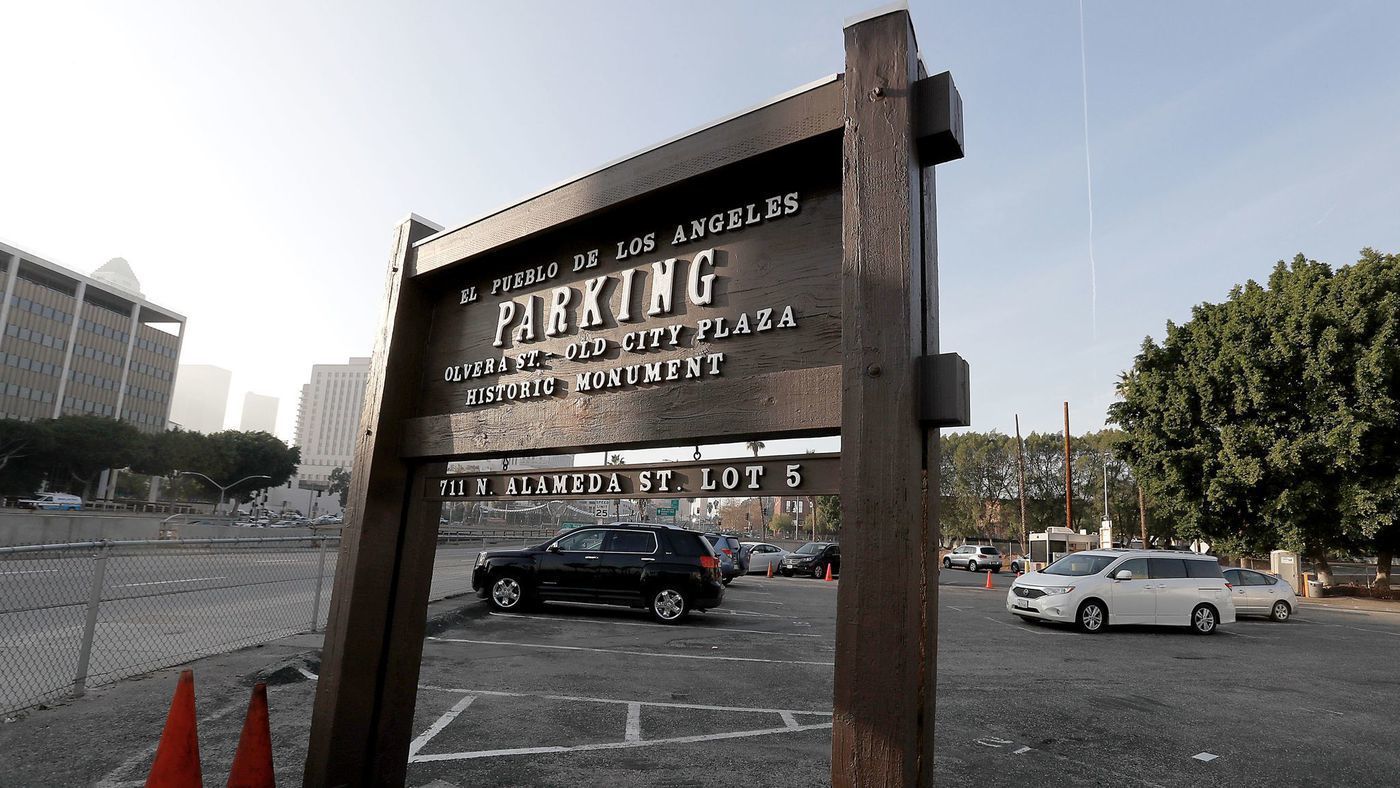 It won’t: the El Pueblo shelter, approved in March, is currently under construction and expected to open this Summer. This pilot project inspired the A Bridge Home initiative that the Koreatown shelter will be part of.
It won’t: the El Pueblo shelter, approved in March, is currently under construction and expected to open this Summer. This pilot project inspired the A Bridge Home initiative that the Koreatown shelter will be part of.
Some argue that the community outreach in this shelter was exemplary, unlike Koreatown, which is debatable - up until the city council vote, there were disgruntled merchants arguing the same old argument being argued in Koreatown today.
Regarding claims that "the city will fail to meet its promises on cleanliness and safety"
Part of Mayor Garcetti’s proposed A Bridge Home initiative includes funding for cleanup and restoration of previous encampment sites.
Our community should monitor and demand proper compliance from the City. It is important for us to make this shelter work, since it sets an example for the others. Moreover, model management of the site would, build further support for future expansion. Demanding that our tax dollars be used wisely and bring fruition over long term will bring accountability to those in charge.
Regarding claims that "it's too close to schools"
Many of the estimated 400 homeless people in Koreatown are already “too close to schools.” A shelter would place them under a roof.
Let's set aside for a moment the fact that it's cruel to tell homeless children that "you don't belong here" by saying the facility needs to be far from schools, but let's explore this issue a bit further. The proposed site is about 5 blocks from the RFK Schools, which is one of the two schools (the other being Young Oak Academy, which is closer) that are "too close" to the facility. I added 2 more blocks to the distance, hoping that this is "far enough".
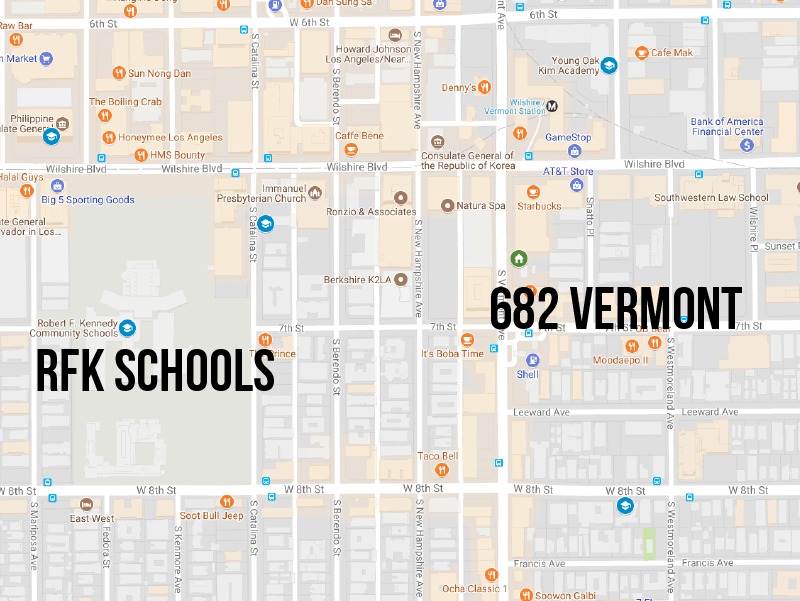

If we draw a circle with the radius of the "far enough" distance around Schools, Academies, Pre-Schools, and Pre-Kinder facilities around K-town, the entire neighborhood will be covered in a thick red cloud. There is no site that is "far enough". Arguing that "it can't be too close to schools" are, at the end of the day, arguing that the facility should not be located in K-town.
Selection Criteria
To date, the city has indicated that nearby homeless population density, center of transportation, and availability of city-owned property as the basis of selecting this site. KRC continues to research more information about the site in general.
For reference, Mayor Garcetti's 2016 Comprehensive Homelessness Strategy Report's "6.3. Location Criteria" (pg 101/PDF pg 107) indicates that the criteria references when selecting a facility to serve the homeless population is the following:
- Data from the most recent homeless Point-in-Time (PIT) Count;
- Multi-stage evaluation of demand in conjunction with an analysis of anticipated regional demand and the cumulative storage capacity of nearby sites to determine the size of potential facilities;
- Impact on residential and high-traffic commercial areas;
- Start-up and operations costs compared to other sites and delivery models that could be implemented in the area;
- Where traditional sites cannot be found, LAHSA will analyze the feasibility of mobile options for storage; Prioritize City owned properties as potential sites; and,
- Prioritize sites that have the potential to accommodate hygiene and outreach services in addition to storage services.
Myth and Facts about the Site
This section has been pasted from Council President Herb Wesson's website.
Myth: The location for this facility was picked at random.
Fact: The site was selected based on data of homeless encampments in Koreatown. According to the Los Angeles Homeless Services Authority, there are approximately 400 individuals living unsheltered in Koreatown. Wesson's office is committed to bringing resources to areas that need them most.
The below map, posted on Herb Wesson's website, is part of the data that was used as reference when determining the location.
Myth: There are other locations in Koreatown more suitable for this facility.
Fact: The only site owned and controlled by the City of Los Angeles and available for temporary housing is 682 S. Vermont Ave. Check out Wesson's comprehensive list of all Publicly Owned Land in Koreatown.
Here are some facts from Wesson's office regarding properties in Council District 10 that have been mentioned in the media and public hearings as "alternative sites" - as shown below, they are not suitable alternatives.
- 601 S. Vermont Avenue – DOT Parking Lot #692 – Owner: City of Los Angeles. Leased to the Korean American National Museum to build replacement public parking, the first Korean museum outside of Korea, and affordable units for seniors. Council District 10 contributed $3.5 million dollars towards the construction. Council File No. 15-0730
- 4600/4601 W. Washington Blvd – DOT Parking Lots #750 and #751 – Owner: City of Los Angeles. Under contract to Meta Housing and Western Community Housing to build affordable units for artists adjacent to the Nate Holden Performing Arts Center. Construction to begin in 2019. Council File No. 16-0739
- 4023 Marlton Avenue – Owner: CRA/LA Designated Authority.
- 3251 S. La Cienega Blvd. (La Cienega Blvd/Ballona Creek) – Owner: City of Los Angeles. This is an alleyway.
Myth: This facility will be up indefinitely.
Fact: All “Bridge Home” facilities will be temporary and will be open for a maximum of 3 years.
Myth: This site will disrupt the surrounding community and businesses.
Fact: This housing will have 24/7 Los Angeles Police Department (LAPD) and Los Angeles Homeless Services Authority (LAHSA) presence. Additionally, Herb Wesson's office is working closely with all stakeholders to ensure the facility is administered without disruption to the surrounding area.
KRC's addition to this topic: Saying it would disrupt the surrounding community and business implies that currently the Homelessness in Koreatown does not affect the community and business as badly as building housing facilities is a blatant attempt to prevent the construction of such.
Myth: This is the only location being built under this new program.
Fact: A minimum of 15 temporary homeless housing facilities will be built across the city. So far, sites have been proposed in Westwood, Studio City, Chinatown, Van Nuys, Hollywood and more.
Myth: There is no legal basis for building this facility.
Fact: Nearly 80% of Angelenos supported Measure HHH, which authorized the construction of temporary housing citywide. The “A Bridge Home” initiative is a result of this mandate from the voters.
Myth: The public will have no opportunities to provide feedback and input.
Fact: While the housing space has been selected, our office will work with the community to determine the specifics of its operation. The public is encouraged to speak at the Homeless and Poverty Committee meeting on May 22nd, and the City Council meeting expected for June.


